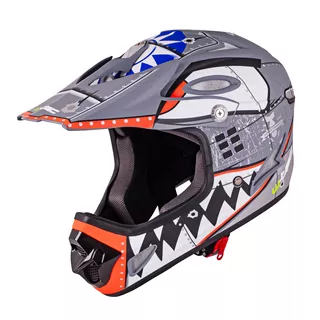Downhill Helmet W-TEC FS-605
94,10 €
In Stock
Compared products
Selected products (fitness trainers) over 165 EUR are covered by an extended warranty of 10 years. And that’s because we are confident in the quality of our products! Extended 10-year warranty also applies to all bicycles Kellys, 4EVER, Devron, DHS, Kreativ, as well as all e-bikes. You can rely on our products. The 10year warranty covers the trainer/bike frame only.
| Number of speeds | 30 |
|---|---|
| Frame | Carbon |
| Wheel size | 27.5" (for users over 155 cm) |
| Brakes | Disc |
| Fork | ROCK SHOX SID 15 120 RLO Taper |
| Front Brake | SRAM X0 ( 180 / 160 ) |
| Rear Brake | SRAM X0 ( 180 / 160 ) |
| Components set | Top components set |
| Rear hub | MAVIC CROSSMAX SLR Disc |
| Front Hub | MAVIC CROSSMAX SLR Disc |
| Rear tire | SCHWALBE RACING RALPH PERFORMA |
| Front Tire | SCHWALBE RACING RALPH PERFORMA |
| Gear shifting | SRAM X0 2X10SPD |
| Front derailleur | SRAM X0 2X10 |
| Rear Derailleur | SRAM X0 10SPD |
| Crank Set | SRAM X0 10SPD 39/26 |
| Cassette | SRAM CS PG-1070 10SPD 11-32 |
| Chain | SRAM PC 1071 10SPD |
| Front Rim | MAVIC CROSSMAX SLR DISC 27.5 |
| Rear rim | MAVIC CROSSMAX SLR DISC 27.5 |
| Brake levers | SRAM X0 |
| Bottom bracket | INTEGRATED |
| Handlebar grip | FSA CARBON PRO CSI RISER 685MM |
| Handlebar stem | FSA CARBON SL-K |
| Saddle | SELLE ITALIA SLS KIT CARBONIO |
| Seat post | FSA CARBON SL-K |
| Year | 2015 |
We are sorry, but this product is no longer available.